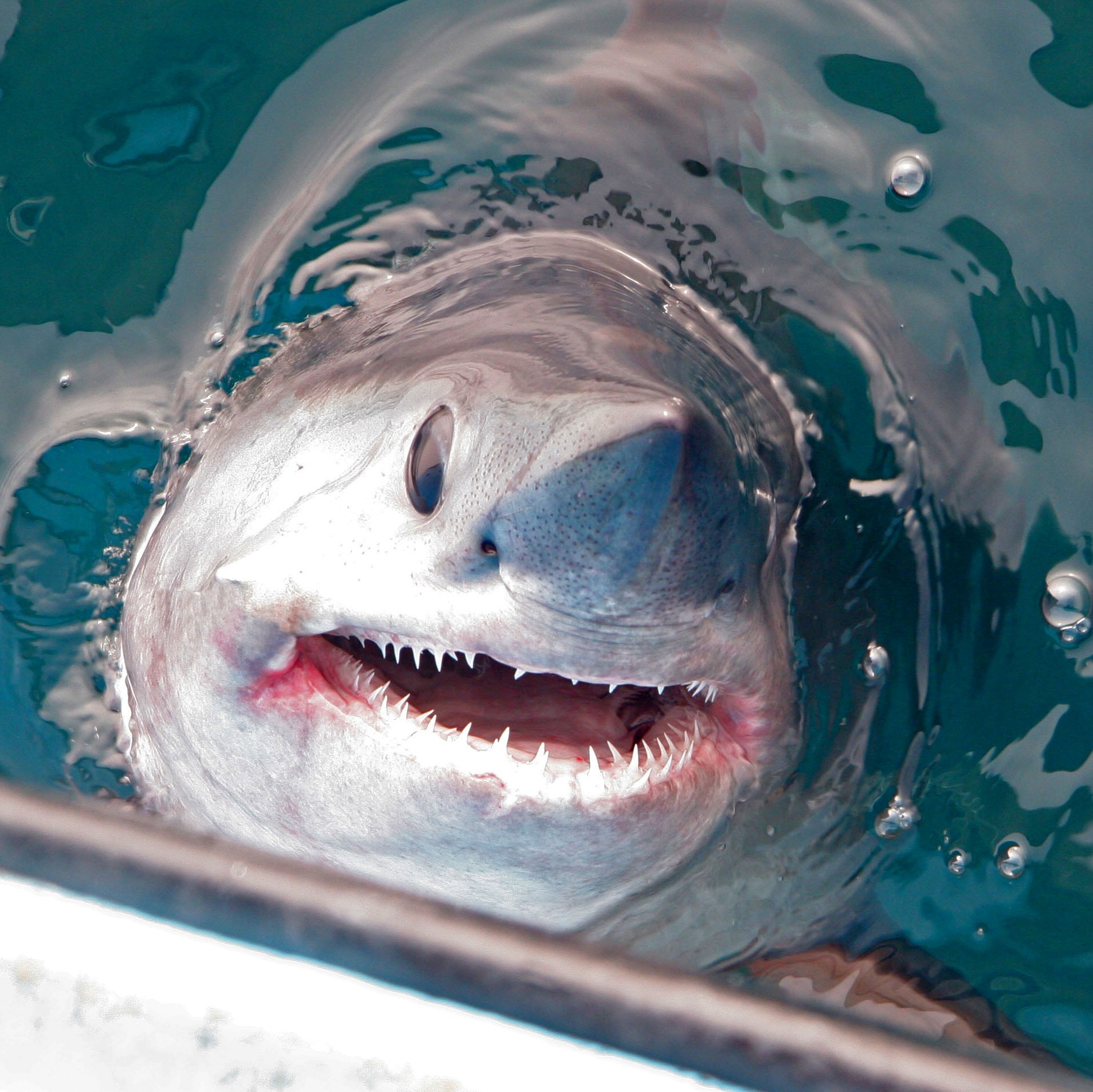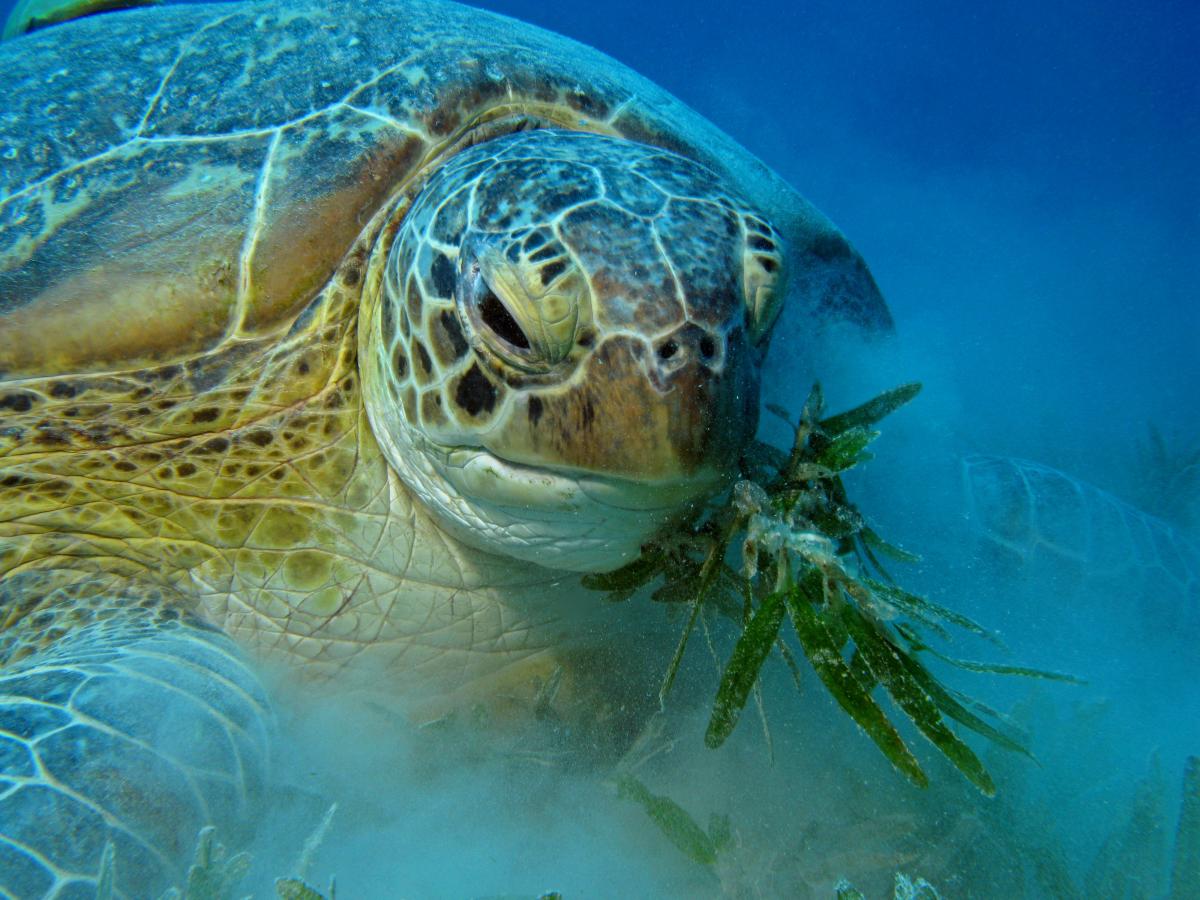Quarter of northeast Atlantic sharks and rays threatened with extinction
The release of the first ever IUCN Red List of Threatened Species™ assessment of northeast Atlantic sharks, rays and chimaeras reveals that 26 percent are threatened with extinction and another 20 percent are in the Near Threatened category.

Photo: Steven Campana
The total number of threatened species may well be higher as there was insufficient information to assess more than a quarter (27 percent) of the species.
The report, released by the IUCN Shark Specialist Group (SSG), reveals that shark, ray and chimaera species are much more threatened in the northeast Atlantic than they are globally. Specifically, seven percent of species in the northeast Atlantic are classified as Critically Endangered, seven percent as Endangered, and 12 percent as Vulnerable, primarily due to overfishing. This means 26 percent are threatened in the northeast Atlantic, compared with 18 percent globally.
“From angel sharks to devil rays, northeast Atlantic populations of these vulnerable species are in serious trouble, more so than in many other parts of the world,” says Claudine Gibson, former Programme Officer for the IUCN SSG and lead author of the report. “Most sharks and rays are exceptionally vulnerable to overfishing because of their tendency to grow slowly, mature late, and produce few young. Those at greatest risk of extinction in the northeast Atlantic include heavily fished, large sharks and rays, like porbeagle and common skate, as well as commercially valuable deepwater sharks and spiny dogfish.”
The European Union (EU) has provided species-specific fishing limits for only four of the region’s 116 sharks, rays and chimaeras. Basking and great white sharks are legally protected in the EU. Catch limits for spiny dogfish and porbeagle sharks exist, but are regularly set in excess of scientific advice.
There are broad EU limits on multiple species of skates and rays as well as deepwater sharks, but these are also not yet in line with scientists’ recommendations. The UK and Sweden are the only northeast Atlantic countries to provide full national protection for certain shark and ray species. Beyond some agreements between the EU and Norway, there are no international catch limits for northeast Atlantic sharks, rays and chimaeras.
The coming weeks bring multiple opportunities to improve the status of northeast Atlantic sharks and rays through meetings of international fisheries and wildlife bodies, the annual process for setting EU quotas, and a long-awaited European Community Plan of Action for sharks and related species. The report includes specific recommendations for conservation action based on scientific advice.
“Never before have European countries had more reason or opportunity to safeguard the beleaguered shark and ray species of the northeast Atlantic,” says Sonja Fordham, Deputy Chair of the IUCN SSG and Policy Director for the Shark Alliance. “Country officials should heed the dire warnings of this report and act to protect threatened sharks and rays at national, regional and international levels. Such action is immediately possible and absolutely necessary to change the current course toward extinction of these remarkable ocean animals.”
The report is the result of a regional workshop to evaluate the status of the northeast Atlantic’s shark, ray and chimaera species using the IUCN Red List Categories and CriteriaTM. Experts from government agencies, universities and private institutions in the UK, Italy, Spain, Portugal, Croatia, Russia, Sweden, Canada and the USA participated in the regional workshop. This and several other regional workshops have contributed to the development of the SSG’s Global Shark Red List Assessment, supported by Conservation International (CI).
“The completion of this global assessment of sharks and their relatives will provide an important baseline for monitoring the status of these keystone species in our oceans,” says Roger McManus, Vice-President for CI’s Marine Programs.
For more information please contact:
• Sarah Horsley, IUCN Media Relations, t +41 22 999 0127, m +41 795283486, e sarah.horsley@iucn.org
• Mona Samari, t +44 (0) 7515 828 939, e mona@communicationsinc.co.uk
• Lisa Bowen, Strategic Marketing & Global Communications, Conservation International, Tel: +1 703 341 2601, Mob: +1 202 746 7452 email: l.bowen@conservation.org
Notes to editors
The data for this report have been submitted for inclusion in the IUCN Red List of Threatened Species™ and are subject to review prior to publication in the Red List.
The report is titled The Conservation Status of Northeast Atlantic Chondrichthyans: Report of the IUCN Shark Specialist Group Northeast Atlantic Regional Red List Workshop. It was compiled and edited by Claudine Gibson, Sarah Valenti, Sarah Fowler and Sonja Fordham.
Most sharks play key roles as top predators in marine food webs. By feeding on the weak and wounded of prey species, sharks help maintain ocean ecosystem function.
Overexploitation, from targeted fisheries as well as incidental take (or “bycatch”) is the primary cause of declines in Northeast Atlantic sharks, rays and chimaeras.
Last month, at the IUCN World Conservation Congress in Barcelona, IUCN adopted Resolutions on shark finning, conservation of oceanic and migratory sharks, and the EU Plan of Action for Sharks.
About IUCN
IUCN, the International Union for Conservation of Nature, helps the world find pragmatic solutions to our most pressing environment and development challenges by supporting scientific research; managing field projects all over the world; and bringing governments, NGOs, the UN, international conventions and companies together to develop policy, laws and best practice.
The world's oldest and largest global environmental network, IUCN is a democratic membership union with more than 1,000 government and NGO member organizations, and almost 11,000 volunteer scientists and experts in some 160 countries. IUCN's work is supported by over 1,000 professional staff in 60 offices and hundreds of partners in public, NGO and private sectors around the world. IUCN's headquarters are located in Gland, near Geneva, in Switzerland.
The IUCN Red List of Threatened Species™ is the most comprehensive conservation inventory of the world’s plant and animal species and a widely used tool for focusing attention on species of conservation concern. The assessments evaluate the conservation status of individual species, identify threatening processes affecting them and, if necessary, propose recovery objectives for their populations. IUCN Specialist Groups assess species and population health and abundance and classify them under categories ranging from Extinct to Least Concern. Species deemed Vulnerable, Endangered, and/or Critically Endangered around the world qualify as Threatened under the Red List criteria. www.iucnredlist.org
The IUCN Shark Specialist Group (SSG) aims to promote the long-term conservation of the world’s chondrichthyan (cartilaginous) fishes, effective management of their fisheries and habitats and, where necessary, the recovery of their populations. The SSG is in the process of assessing the status of the roughly 1,000 species of cartilaginous fishes. www.flmnh.ufl.edu/fish/organizations/ssg/ssg.htm
The IUCN Shark Specialist Group’s Red List Programme has been supported generously by Conservation International. The SSG’s Northeast Atlantic workshop was kindly hosted by the Joint Nature Conservation Committee. The workshop and preparation of this report was supported by the Department for Environment, Food and Rural Affairs, the Department of the Environment Northern Ireland’s Environment Agency, the National Marine Aquarium, the New England Aquarium’s Marine Conservation Action Fund, the Blue Planet Aquarium, The Deep and the Lenfest Ocean Program. The Pew Fellows Program in Marine Conservation has supported Sarah Fowler’s work with the SSG.
The Shark Alliance is coalition of 59 conservation, scientific and recreational organisations dedicated to improving European policies with respect to sharks and rays. By reaching out to the public, governments, interest groups and the media, the Alliance strives to secure science-based national, EU and international conservation measures for these vulnerable species. www.sharkalliance.org
Conservation International (CI) applies innovations in science, economics, policy and community participation to protect the Earth’s richest regions of plant and animal diversity and demonstrate that human societies can live harmoniously with nature. Founded in 1987, CI works in more than 40 countries on four continents to help people find economic alternatives without harming their natural environments. For more information about CI, visit www.conservation.org
The Global Marine Species Assessment (GMSA) began in late 2005 and is based in the Department of Biological Sciences at Old Dominion University in Norfolk, Virginia. This project is a joint initiative between IUCN and CI and will be the first global review of the conservation status of every marine vertebrate species, and of selected invertebrates and plants. The project involves a range of partners in compiling and analyzing all existing data on approximately 20,000 marine species, and will determine the risk of extinction according to the IUCN Red List Categories and Criteria. http://www.sci.odu.edu/gmsa/



